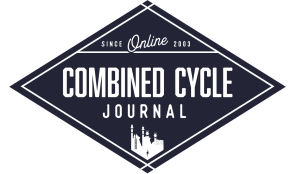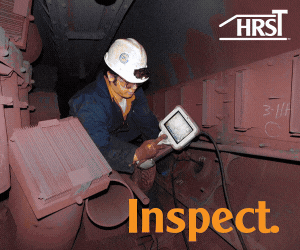
Held in Asheville, NC, in January 2025, the Vogt Power Combined Cycle Seminar delivered concentrated HRSG fundamentals, inspection how-tos, and deep technical case studies. End users compared notes with peers, and Babcock Power’s business units were on hand with design, construction, field, and product expertise. The content below highlights what attendees learned and why you should consider attending in February.
Session blocks moved from HRSG basics to inspection priorities, then into retrofit and rerate case studies, and ended with end-user experience. This progression helped less experienced staff build a base while giving veteran engineers and O&M leads detailed examples they can plan to implement. The emphasis throughout was on actionable steps, clear decision criteria, and most importantly, code compliance.
HRSG 101. The fundamentals session led by Greg Rueff traced how cycling and faster starts have reshaped HRSG design and operation, culminating in present-day requirements for high ramp rates, ≥60% combined-cycle efficiency in prior generations, and today’s focus on flexibility. Materials guidance noted broader adoption of Grade 92 for heating surfaces as ASME lowered allowable stresses for Grade 91, while many plants still use Grade 91 in high-energy piping. Hydrogen blending and extreme load following were identified as ongoing realities operators must plan for.
Inspection. Much to learn from Jake Holvey, field services director, in his photo-rich presentation which organized field observations into six categories: safety, aging, corrosion, thermal growth, overheating and water chemistry. Examples included neglected anchoring systems and broken repair welds tied to module movement, reinforcing the value of tracking growth and slot travel instead of “set and forget.” The structure offered inspectors a simple checklist to frame outage scope and near-term mitigations.
GT24 HRSG front-end replacement. Vignesh Bala, VP of HRSG services, provided a detailed look at a high-cycling 1×1 CCGT coupled with a two-pressure, once-through HRSG with horizontal reheater bundles. Site experienced persistent tube-to-header joint leaks and startup challenges. Root-cause analysis identified four primary issues and the corresponding fixes:
- Material system and dissimilar welds. Original Grade 22 inlet headers plus stainless tubes and outlets created thermal mismatch. The redesign moved the reheater to Grade 91, with thermal analysis verifying predicted startup metal temperature around 1180F, below ASME’s 1200F limit for the service.
- External supports imposing stress. Pipe supports on main reheat and superheat headers were influencing harp stress. The fix added new guides, safe ends and axial restraints, and reworked hangers.
- Drainage that could not clear condensate. Basement routing, expansion loops and side-exit drains prevented proper removal of water at starts and shutdowns. The redesign re-worked drains and added condensate detection.
- Unmanaged thermal growth. Differences between tube and header materials aggravated expansion; the redesign pre-tensioned supports to harness growth rather than fight it.
Bala stressed that inspection data, leak maps and empirical behavior should trigger retrofit timing rather than relying solely on theoretical life-cycle studies.
GT upgrade drives HRSG rerate. A utility in the western USA upgraded a 2×1 F-class CCGT, targeting fast capacity for summer reliability. Thermal modeling showed a 58-MW gain, but terminal pressures exceeded relief limits, even 1×1 unfired, requiring a formal HRSG rerate. Mechanical review, updated to ASME 2021/B31.1-2020, leveraged higher allowable stresses, driving selective reinforcement rather than wholesale replacement.
Scope included added drum cyclones and reworked chevrons, larger attemperator capacity, and replacing RH harps with P91/P92 to meet new MAWP and constructability needs. The team pre-aligned with the AI and state; shop 1.5x MAWP hydro, 80% MAWP field hydro, and 100% NDE ensured compliance.
After two solid days of learning and networking, the takeaways for end users were plentiful, including the following:
- Use inspection categories to build outage scope and measure movement where modules grow
- Trigger reheater or front-end replacements based on empirical leak behavior, then address materials, supports, drains and growth together
- When a GT upgrade is planned, commission a thermal study early, involve the AI and state, and prepare a code-compliant rerate plan covering HRSG and BOP
The 2026 seminar returns to Asheville, February 11–12, at the Omni Grove Park Inn. Contact Jennifer Pasquariello, jpasquariello@babcockpower.com, to reserve your seat. Preliminary agenda includes the following topics:
- HRSG 101
- Design for advanced-class GTs
- State of market, tariffs, supply chain
- Endcap repair and replacement
- Top ten drivers of lost run time
- Rerating your HRSG





